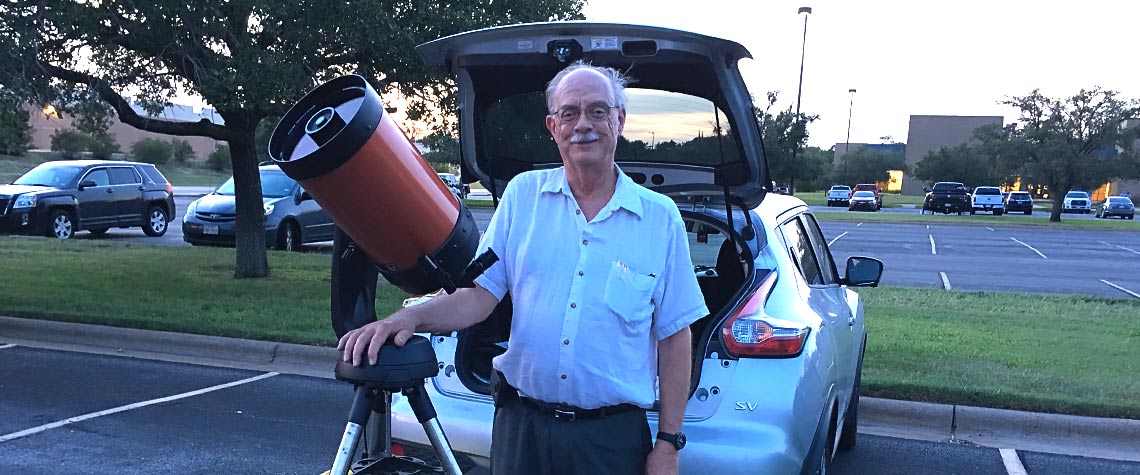Page 8

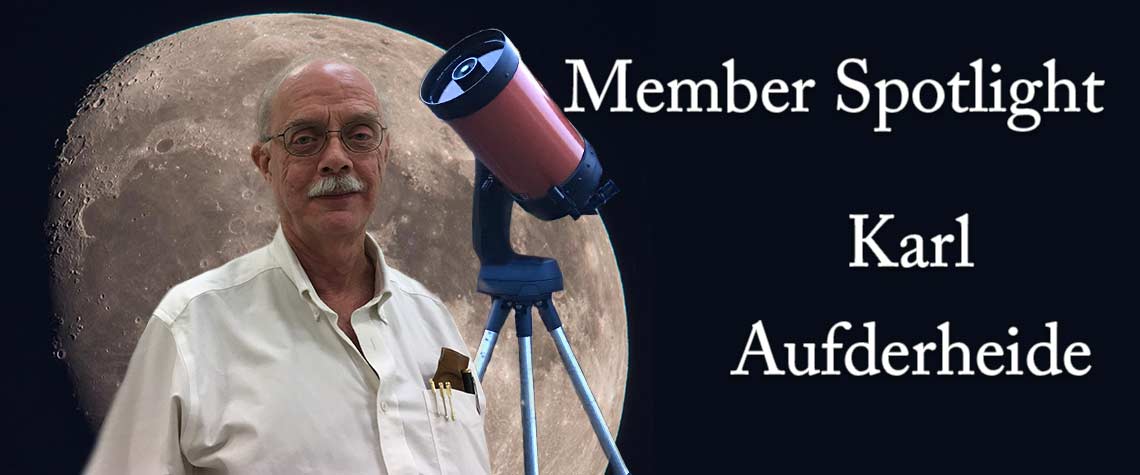
Biologist - Club Officer - Outreach Volunteer - Astronomer
1. Tell us about yourself.
Recently retired, Cell and Developmental Biologist. Have worked for more than 40 years on biological projects using Paramecium as a research model. I named a new species, Paramecium sonneborni, and I was the first to transform paramecia using cloned genes. In recent years, I've been studying the phenomenon of structural inheritance of complex surface structures in paramecia.
For teaching, I taught freshman Biology for nearly 40 years, as well as many years of several different Cell and Developmental Biology courses, at the undergraduate and the graduate levels. I also participate in team-teaching a graduate-level light microscopy course every year.
2. How did you become interested in astronomy?
I was a science nerd in grade school and high school. Astronomy was one of the many branches of science that attracted me.
3. How long have you been involved with the hobby?
Since the early 1960s. In high school, I purchased a reflector telescope lens grinding kit from Edmund Scientific and worked on it for a few years. I was in the late polishing phases of the lens when I graduated from high school and started undergraduate work in Microbiology. At that time, I had to focus most of my time on undergraduate and then graduate education.
The lens project was put aside for many, many years, until I brought the lens to a session about homemade telescope components by Tim Cowden. We looked at the lens in some detail and found that I had done decent work on its shaping and polishing. I probably should finish the lens and get it coated.
In the early 2000s, I developed an interest again in astronomy, so I joined the Club. And somehow, the Club was fooled into electing me president for 3 terms and vice-president for several terms since. (Why an astronomy club elects a biologist as an officer is something I've never quite understood.) But I think my terms as president were very good for the Club in developing the culture of the Club. I hope that I started a level of standards and participation that ensures the Club’s continuing existence.
4. What type of equipment do you currently use for observations?
I have two good telescopes: a 6" refractor and an 8" Schmidt-Cassegrain telescope, both from Celestron, with go-to tracking mechanics. I've used the Schmidt-Cassegrain for star parties because it is compact and lighter than the refractor. For scans of the sky, I have owned for many years a very good pair of binoculars from Edmund Scientific.
5. Describe a normal night of observing?
Not sure I've ever had a “normal night.” So much depends on the weather and what is in the sky and how I feel, but it seems that something special happens nearly every time.
6. Do you have a favorite part of the sky and favorite time of the year to observe?
My favorite time is in the fall and winter when the nights are longer and the weather is cooler. And, naturally, I seem to end up looking at a lot of objects in the vicinity of Orion. Unfortunately, there are more clouds and crummy weather in the winter, but that's the usual tradeoff of astronomy.
7. What is the most awe-inspiring object or event you have seen through your telescope?
Actually, the object was not seen through the telescope, but seen on my telescope. Late one night, in my courtyard, I had the big refractor set up and I was looking at any number of objects.
Something disturbed the telescope, and I looked up and saw the shape of a bird perched on the front end, by the objective lens. I walked around and looked more closely and discovered I had an owl perched on my telescope. A southern screech owl. It apparently didn’t perceive the red light I was using, so I could get very close and see the owl without it being spooked. It sat there for several minutes before it flitted off, and sat on a beam end from my garage gable for nearly half an hour. It hung around in the neighborhood for several weeks. I could hear it hooting some evenings.
8. What gives you the most satisfaction with your hobby?
When the technology works correctly and I actually find something where it's supposed to be. I especially like to observe the Moon and planets and find detail in those images.
9. What do you like most about attending star parties?
The camaraderie. The interactions with other enthusiasts when looking or finding interesting things and sharing views through their instruments. When it's a public star party, it's exciting to show off the sights to the people attending. So many people don't have the chance to actually look through a telescope and see first hand the many interesting objects in the sky.
10. Do you have any parting comments?
I have thoroughly enjoyed my time in the Club and my ability to interact with other members, with seminar speakers, and with Don Carona. I have appreciated the support of the Club in electing me, over and over, to the leadership positions, and I have appreciated the chance to serve the Club in its various missions. I anticipate continuing my membership for years to come.
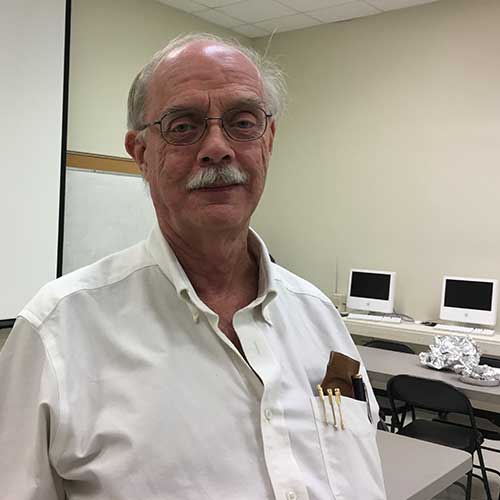
BVAC Leader - served as BVAC president and vice president for many years
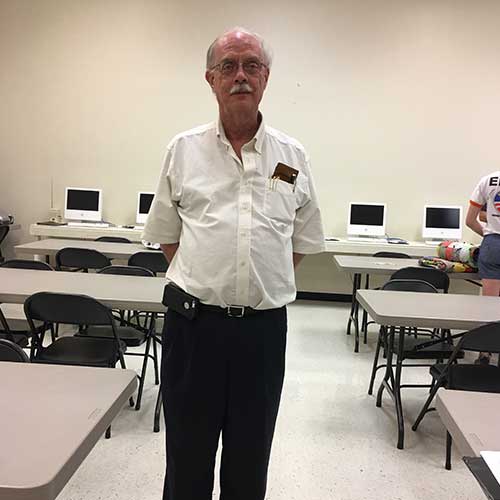
Attending BVAC meeting and waiting for observing opportunity after the meeting
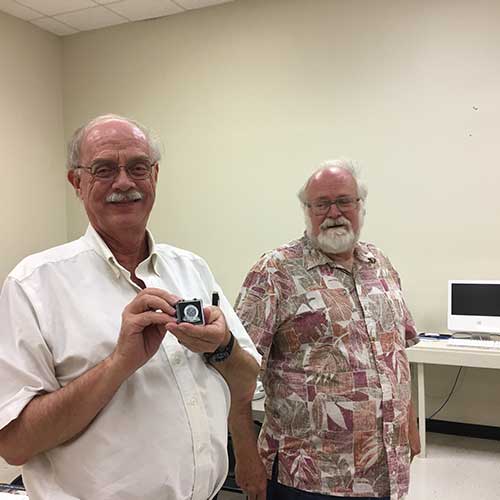
Receiving award from Night Sky Network for outreach work
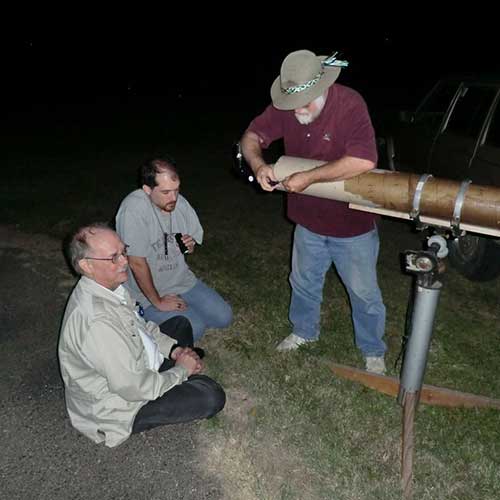
Listening to Tim's explanation of his project
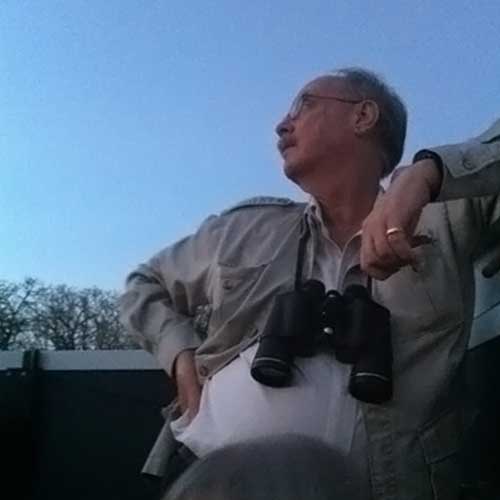
Waiting for dark - Where are those stars?
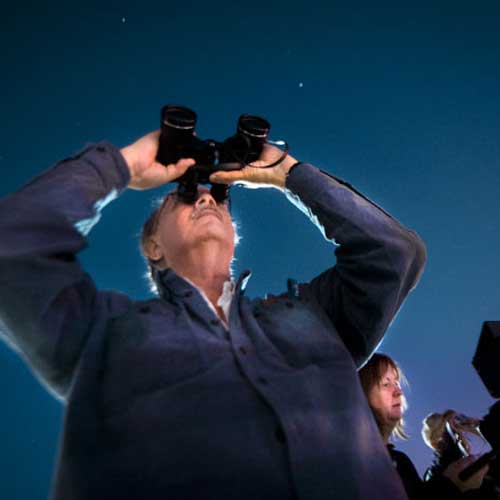
Fantastic night view
